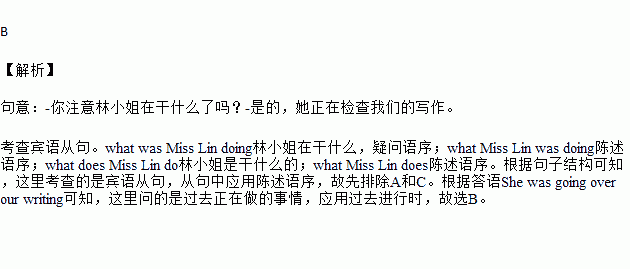题目内容
— Did you notice . in her office?
— Yes. She was going over our writing.
A.what was Miss Lin doing B.what Miss Lin was doing
C.what does Miss Lin do D.what Miss Lin does
练习册系列答案
相关题目
假如你是Lucy, 你在给你的美国的笔友Tom写封信,介绍你的学校和学校生活。要点如下:
个人情况 | 八年级学生,就读于天一实验学校(Tianyi Experimental School) |
学校情况 | 1)7:05上课,17:15放学,午餐一小时,午餐时间...... 2) 有明亮整洁的大食堂,现代化图书馆,藏书很多 3)学科丰富,学生自由选择 4)一个半小时的家庭作业 |
课外活动 | 各种俱乐部,活动丰富 |
注意:
1. 词数90字左右,开头和结尾已经写好,不计入词数
2 回复必须包含所有要点,不要逐句翻译,可适当发挥,使全文连贯、连贯。
Hi, Tom!
Thanks for your e-mail. Sorry I haven’t written sooner. Now I want to tell you about my school and school life.
I think my school is great and school life is colorful. We have much fun here.
All the best,
Lucy

